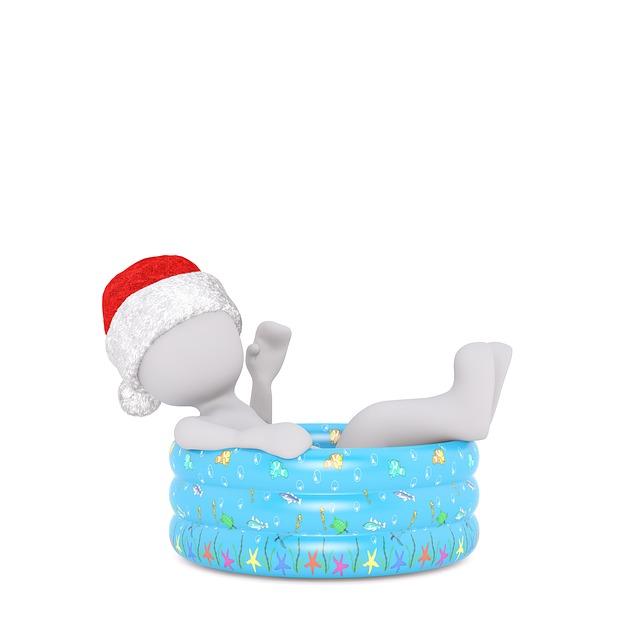Key Takeaway
In this article, we dive into the question, What types of above-ground pools can you keep up year-round? Not all above-ground pools are designed to withstand year-round conditions. While inflatable pools must be taken down for winter, more durable options like steel-frame, resin, or semi-inground pools can remain in place with proper winterization. The best choice depends on your local climate, pool materials, and maintenance commitment.
Can You Keep an Above-Ground Pool Up All Year?
Yes, but it depends on the type of pool and how well you prepare it for seasonal changes. Some above-ground pools are designed to handle freezing temperatures, while others must be taken down or risk damage. Factors like frame material, liner strength, and proper winterization play a crucial role in whether your pool can stay up year-round.
Types of Above-Ground Pools That Can Stay Up Year-Round
The above-ground pool market is huge and there are certainly a wide variety of pools you can purchase. The most popular are:
Easy Set / Inflatable Above Ground Pool
These are very popular due to their ease of setup, low cost, and relatively small size. Perfect for small yards and low maintenance. They are generally 12 feet in diameter but can be made larger for an additional fee with some manufacturers.
Many people choose these above-ground pools because they’re portable and light enough to move around the yard.
They require little setup which is great for owners who are unwilling or unable to deal with a lot of heavy lifting.
However, despite their many positive attributes above-ground swimming pools that use a blower can have one large drawback: they aren’t winterized.
Steel Frame Pools
Steel frame pools have a sturdy metal framework that supports a vinyl liner. They can be left up year-round, but exposure to winter elements can lead to rust and corrosion. Applying a rust-resistant coating and properly covering the pool can help extend its lifespan.
Resin Frame Pools
Resin frame pools are a great alternative to steel pools since they are resistant to rust and corrosion. These pools can remain up during winter, provided they are winterized correctly. The non-metallic frame also makes them a better choice for areas with high moisture or snowfall.
Hybrid Above-Ground Pools
Hybrid pools combine steel and resin components, offering a balance of strength and weather resistance. They are designed to be durable enough for year-round use, but just like steel or resin pools, they require proper winterization.
Semi-Inground Pools
Semi-inground pools are partially buried in the ground, providing better insulation and structural support. These pools can withstand seasonal changes well and are built for permanent installation. Adding an insulated pool cover can help prevent freezing issues.
Types of Above-Ground Pools That Must Be Taken Down for Winter
Inflatable Pools
Inflatable pools are not designed for long-term outdoor use, especially in freezing temperatures. Cold weather makes the vinyl brittle, increasing the risk of cracks and leaks. It’s best to drain and store them indoors during winter.
Soft-Sided Pools
Soft-sided pools, like those with PVC or fabric walls, should also be taken down before winter. Snow, ice, and freezing temperatures can weaken the material and lead to punctures or structural failure.
Winterizing Your Above-Ground Pool
If you plan to keep your above-ground pool up year-round, winterizing it properly is essential. Here’s how:
Check Periodically – Inspect your pool during the winter to ensure the cover is secure and that no ice buildup is causing stress on the structure.
Balance the Water Chemistry – Maintain proper pH, alkalinity, and chlorine levels to prevent algae and bacteria growth.
Lower the Water Level – Reduce the water level to just below the skimmer to prevent freezing damage.
Remove Accessories – Take out ladders, pumps, and skimmers to protect them from harsh weather.
Use a Winter Pool Cover – A durable, weather-resistant cover keeps out debris and prevents excessive ice formation.
For a more comprehensive guide to winterizing your above ground pool, click here.
Final Thoughts on what types of above-ground pools can be left up year-round
If you want to keep your above-ground pool up year-round, choosing a durable pool type and following proper winterization steps is key. Resin, hybrid, and semi-inground pools are the best options for permanent setups, while inflatable and soft-sided pools should be taken down for winter. With the right preparation, you can ensure your pool stays in great shape for the next swim season!
Related Questions
What Happens If You Don’t Winterize an Above-Ground Pool?
Failing to winterize your pool can lead to ice expansion, which can crack the liner, damage the frame, or cause leaks. Debris buildup can also lead to algae growth and bacteria contamination.
What Is the Best Type of Pool for Year-Round Use?
Resin or hybrid pools are ideal for year-round use due to their resistance to rust and corrosion. Semi-inground pools also provide excellent durability for all seasons.
Can You Leave Water in an Above-Ground Pool Over Winter?
Yes, but the water level should be lowered below the skimmer, and the pool should be properly treated with chemicals to prevent freezing damage.

0 Comments